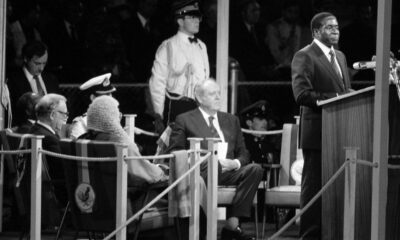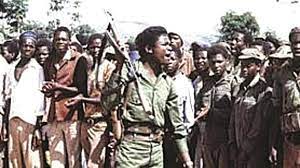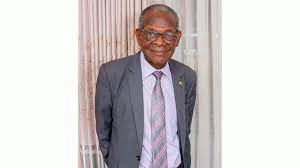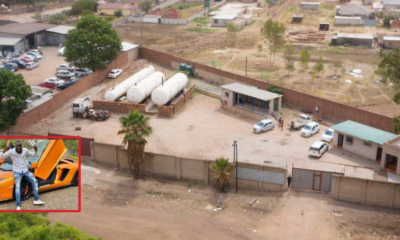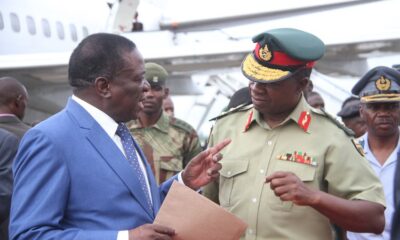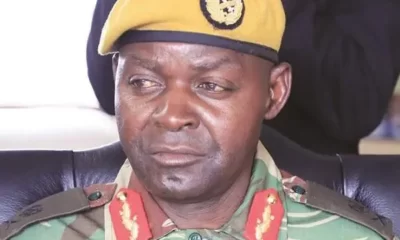In a bid to shed light on the historically intertwined relations between South Africa and Zimbabwe, and their dynamics, particularly through the imperial perspective and active agent of colonial politics whose impact and influence had far-reaching consequences for the two countries individually and collectively, as well as through intersectionality, South African-based Zimbabwean Advocate Tererai Mafukidze focuses on the 1922 Rhodesian referendum and its implications.
A referendum on the status of Southern Rhodesia was held in the colony on 27 October 1922. Voters, almost all of them white, were given the options of establishing responsible government or joining the Union of South Africa. It changed the course of history.
Of course, Zimbabwe and South Africa’s relations had long earlier been shaped by other historical processes and interactions, including the Bantu migration, Mfecane and mass migration, and trade well before the colonialists arrived in the region. Colonialism brought a new dynamic and politics whose impact is still being felt up to this day.
Tererai Mafukidze
AT the end of the London discussions before the October 1922 referendum, the Colonial Office stated that the people of Southern Rhodesia had to consider the alternative, that is, entry into the Union of South Africa.
Winston Churchill’s Colonial Office required that a delegation be appointed to confer with South African prime minister Jan Smuts on the terms on which Southern Rhodesia could join the Union of South Africa.
Further, once Smuts’s terms were available they needed to be placed together with the Responsible Government terms before the electorate by means of a referendum.
Lawrence Vambe, an author, notes that when the delegation went to London to meet Churchill over self-government, it did not contain a single African.
He adds: “But it made no difference, for, especially at this time, even the British Government agreed that Southern Rhodesia was a white man’s country. However, Mr Churchill not only shared the dream of a bigger and stronger British dominion in southern Africa. He was also a great friend and admirer of General Smuts, whose arguments in favour of the incorporation in Southern Rhodesia into the Union of South Africa made more political and economic sense than those of Sir Charles Coghlan. Without being too partisan, Churchill urged the Rhodesian delegation to consider incorporation more seriously. But the two possibilities, internal self-government and absorption into South Africa, could be best be decided by the voters of Southern Rhodesia, he suggested.”
Interestingly, the idea of Northern Rhodesia (Zambia) joining the union was also not dead to Churchill.
Churchill appointed two Northern Rhodesian representatives to participate in the discussions with Smuts. The Northern Rhodesian settlers were also opposed to joining the union.
Discussions with Smuts were held in April 1922. While talking to the settlers Smuts was on the other hand also negotiating with the British South Africa Company (BSAC).
The discussions with the BSAC delayed Smuts’s finalisation of the terms for Southern Rhodesia’s entry into the union. The elected members of the Legislative Council of Southern Rhodesia were impatient. They decided to force the issue by issuing referendum ordinance of 1922.
Claire Palley says that this embarrassed Churchill and the High Commissioner. They were placed in a delicate position. Smuts managed to produce the terms of entry into the union which averted any action by Churchill and High Commissioner.
Smuts was desperate to get Southern Rhodesia joining the union. He offered generous terms to both the BSAC and the electorate of Southern Rhodesia. These terms included a financial deal for BSAC and financial advantages for Europeans. Southern Rhodesia would be entitled to elect 10 members to the Union House of Assembly.
The number would subsequently increase to 17, among other favourable conditions, development loans for public works, development of the railway system, Crown lands free from charges, etc.
By offering 10 seats in the South African parliament to Rhodesia, Smuts was effectively giving Rhodesia more voting powers than South Africans enjoyed. This meant 1 200 Rhodesians would have the same voting powers as 2 958 persons in the Transvaal. Smuts also promised to spend £5 million during the next 10 years to be spent on Rhodesian development.
Smuts even offered Coghlan a cabinet post in the South African government should he switch sides and join the unionists. These were favourable conditions one expected to pass.
However, the settlers would not be swayed by the favourable conditions.
In June 1922, Smuts also called on Northern Rhodesia to join the union. Roy Welensky in his biography states that Churchill had promised Smuts that should Southern Rhodesia join the Union of South Africa, Northern Rhodesia would be thrown in as a gift!
In brief, when Churchill became Colonial Secretary in February 1921, he was faced with a dispute over “Greater South Africa.”
During his time as Secretary of State, important decisions were taken for the future of Palestine and Iraq, Kenya, and Southern Rhodesia.
A London newspaper report on 25 January 1922 said the latest political development in the Empire was embodied in a white paper which contains the draft of a constitution for Southern Rhodesia which has been hammered out between Churchill, the representatives of the people of Rhodesia, and the present ruling authority, BSAC.
In the accompanying despatch, Churchill expressed the opinion that the new constitution, if adopted, will confer upon the people of Rhodesia full and satisfactory control.
Churchill proposed to appoint a delegation of Rhodesians to ascertain the terms on which Rhodesia could enter the Union of South Africa. Two alternatives would then be submitted for referendum to the people of Rhodesia.
The BSAC, which had administered Rhodesia since 1889, was about to hand over to local government.
Argument arose over what that government should be. Smuts, later Churchill’s close friend, wished South Africa to incorporate Rhodesia into the union. Rhodesians led by Sir Charles Coghlan demanded Responsible Government (self-government).
Churchill accepted a commission’s recommendation to hold a referendum on the question.
In September, he allowed Smuts to declare the terms by which Rhodesia would join South Africa.
Churchill said a referendum was his “personal wish.” It was duly held, but nearly 60% of white Rhodesians voted against the union. Northern Rhodesia became independent Zambia in 1964. The south became independent Zimbabwe in 1980.
To be continued…
About the writer: Advocate Tererai Mafukidze is now a member of the Johannesburg Bar.
He practises with Group One Sandown Chambers in Sandton, Johannesburg. His practice areas at the Bar are: general commercial law, competition law, human rights, administrative and constitutional law.


